Sharlyn J. Lauby's Blog, page 37
June 25, 2023
Use PACE to Develop a Communications Plan

Estimated reading time: 3 minutes
It’s hurricane season where we live, which means we set aside some time to review our emergency plans. Let me say, even if you don’t live in the path of hurricanes, every location has some sort of disaster they need to be aware of (i.e., earthquakes, tornados, snow, fires, etc.) and plan for.
Every organization should have an emergency plan in place. In addition, each of us should have a personal emergency plan. And if you’re working in a remote or hybrid situation, this could mean that you have to think about both your personal and professional lives when it comes to emergency planning. I’m sure companies want to know that employees have a plan in place not only for themselves but for their work-related stuff. And vice versa.
Which brings me to today’s article about communications. Part of a good emergency plan is communication. I was facilitating a seminar on leadership and management skills, and someone mentioned an acronym they use for communications planning. It’s called PACE, which stands for primary, alternate, contingency, and emergency. I immediately asked if I could share it.
My initial reaction is that PACE is similar to the RACI or MOCHA models in terms of assigning a person or role a responsibility. Only with PACE it’s focused on communications.
PRIMARY stands for the primary person/role responsible for communication. I’m going to use person/role because there are times when a specific person might be responsible for communication or there could be times when the plan assigns responsibility to a designated role. For example, in the case of an emergency plan, primary responsibility might be assigned to the “chairperson of the emergency committee” knowing that the person might change.
ALTERNATE can represent the person who will handle communication responsibilities should the primary person be unavailable. I think this is really important because I’m not sure how many emergency plans go that deep and designate an alternative. Also, keep in mind that any person designated as an alternate should be given the same training as the primary so they are able to fulfill their responsibilities as needed.
CONTINGENT would be identifying someone who could step into the role should the primary and/or alternate are unable to do so. You could view them as a second alternate. When I think of contingent, it also makes me consider whether this role should be someone internal or external. Maybe the primary and alternate would be internal with the contingent being an external contractor or consultant.
EMERGENCY can be viewed two ways. First, emergency could be thought of as your third alternate as in “call on this person as an emergency measure”. But another way to view the emergency is in terms of “call this person to handle big epic emergencies”. It’s possible that the primary and alternate handle certain types of emergency communications but for higher level emergencies, this would be the designated person/role.
One of the things that I like about the PACE acronym is that I could see it being used for more than just emergency plan communications. Let’s say the company is introducing a new program. Identify who the primary, alternate, contingent, and emergency communications representatives will be.
Being able to communicate well is one of the keys to personal and professional success. When we can put together a plan and identify the people/roles for each step in the plan, it makes things so much easier. Everyone knows what they need to do and can focus on doing it well. Make a plan then work the plan. That’s what success is all about.
Image captured by Sharlyn Lauby aboard the Queen Mary in Long Beach, CA
The post Use PACE to Develop a Communications Plan appeared first on hr bartender.
June 22, 2023
Bookmark This! The Equality Edition – HR Bartender
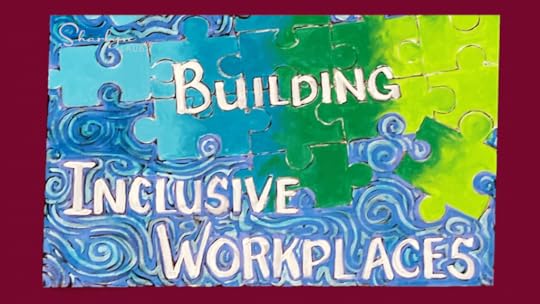
Estimated reading time: 3 minutes
According to a survey from Pew Research, approximately 2% of U.S. adults are transgender or nonbinary, meaning that their gender is different from the sex they were assigned at birth. While that might seem like a very small percentage, 44% of U.S. adults say they know someone who is.
At this year’s Society for Human Resources Management (SHRM) Talent Conference, I had the opportunity to hear Ashley Brundage, founder and president of Empowering Differences, a consultancy providing LGBTQ+ education and training programs. During her session at SHRM Talent, Ashley shared stories about her transition and the challenges she faced. She also spoke about her role as vice president of diversity and inclusion for a national financial institution. Ashley provided a wealth of resources that we can use to help educate ourselves and our organizations.
The National LGBT Chamber of Commerce is the largest advocacy organization dedicated to expanding economic opportunities for LGBTQ people. Their offerings include a LGBTBE certification.
The National Center for Transgender Equality is the nation’s leading social justice advocacy organization for trans people. Their website includes self-help guides, an action center, and a legal services directory.
The Movement Advancement Project (MAP) is an independent non-profit think tank that provides research and communications to advance equality and opportunity for all. Their website includes messaging guides to help people have discussions about LGBTQ issues.
As human resources professionals, part of our role is to ensure that the people who engage with our organizations are treated equally and equitably. Here are some ways we can turn talk into action when it comes to providing a more equal, equitable, and inclusive work environment.
Create More Inclusive Workforce with More Inclusive Job Postings
There’s an old computer term called GIGO (garbage in, garbage out). It reminds us that poor systems result in poor outcomes. If organizations are serious about creating a more inclusive workplace, then they need to have an inclusive hiring process. And the hiring process starts with writing a good job posting.
Being a Better Ally is not About You
Companies need to have policies that support their talk about the importance of DEI. And on an individual level, it means the same thing. It’s great to post frustrations on social media about injustices. I’m not saying you should stop. But it also means backing up the talk with action when it comes to getting involved. Do your homework and get educated on the issues.
Organizations Can Create Workplace Belonging
Employees want to work for companies that make them feel welcome. They want to work at places where they feel they belong. And when it doesn’t happen, everyone suffers. But when belonging happens, employees can bring their best selves to work, and everyone is better for it.
I believe that organizations want to do the right thing. And that education is a step toward action. I hope that organizations are able to use these resources to do just that.
Image captured by Sharlyn Lauby while exploring the streets of New Orleans, LA
The post Bookmark This! The Equality Edition – HR Bartender appeared first on hr bartender.
June 20, 2023
How to Conduct a Job Analysis – HR Bartender
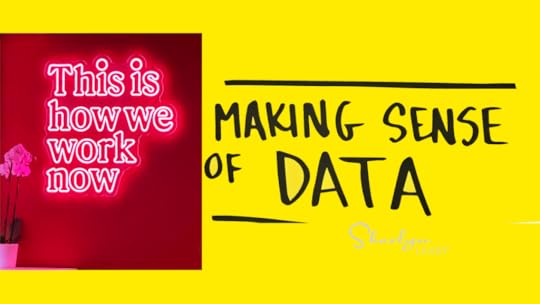
Estimated reading time: 4 minutes
A job analysis is a process that collects information about jobs. The outcome of a job analysis is two-fold.
JOB DESCRIPTION: A list of the activities attached to the job.
JOB SPECIFICATIONS: The knowledge, skills, and abilities (KSAs) needed to do those activities.
We know that job descriptions and job specifications are important and utilized in many ways. They help us manage the work, design jobs that people want, establish pay grades, monitor performance, and ultimately, hire the best employees.
Organizations focused on effectiveness and efficiency will want to know that their job descriptions and job specifications are up-to-date because it has an impact on the bottom-line. I recently saw an article in HR Brew talking about hiring for new roles but not knowing exactly what success would look like. One way to start thinking about designing new jobs is by conducting a job analysis.
I learned about job analysis working at an airline. I had just been hired and my boss called me before my first day to say the company had a high priority project they needed me to work on – hiring a director of in-flight services. She said, “Can you do that?” My reply was “Sure, but I have one question. What does a director of in-flight services do?” In case you’re wondering, the position is responsible for the flight attendant group and the services that happen in-flight. Makes sense now, but this is why job descriptions are important. So, if the organization hasn’t gone through the exercise, it might be time to use a job analysis to get things current.
There are three methods for gathering data in a job analysis. You can make this as detailed as you wish.
Interview: This can happen in-person or via video call. The advantage of this method is that the interviewer (either HR or the hiring manager) can talk to someone, read their body language, and ask follow-up questions if necessary. The challenge is that it takes time and requires a skilled interviewer. Also remember, if you’re recording interviews, consult your legal team about proper authorizations. Observation: This is exactly what it sounds like. Someone observes and records the work. Like the interview option, it does require a skilled observer and it takes time. The plus side is that observation could uncover activities that someone fails to mention during an interview. Maybe they didn’t remember them or didn’t feel the task was important. The downside is that if people feel uncomfortable about being observed, will they start doing things that they don’t typically do which will impact the outcome. Survey: This is the least expensive option. Surveys can be done via pen/paper or electronically. They could also be anonymous if necessary. The biggest challenge with a survey is getting responses. Survey fatigue is a real thing. Organizations will want to be careful about overwhelming employees with surveys. Another downside of a survey can be the inability to do follow-up.The idea behind gathering information about the job is to confirm that the work is getting done. This isn’t really the people (that’s a conversation for another day). A job analysis is about figuring out how the work is getting done in the organization and is it assigned to the right job title. Organizations can take the information and possibly shift some responsibilities for greater effectiveness and efficiency.
And in the case of a new role, the organization can ask themselves “What is the work we want the role to do?” As a general rule, organizations don’t create jobs with absolutely no idea of what they want that job to do. They might not have all the details worked out – and that’s where a job analysis can help. HR can look at related jobs data to align the new role with others.
A job analysis might seem like a big project – because it is. But it produces a valuable result that will help the organization perform at a high level.
P.S. There’s one more thing to keep in mind when we’re talking about job analysis and job descriptions. That’s maintenance. The last thing organizations want is for their job descriptions to get out of date. It creates a huge project. So, if the company goes through the exercise of doing job analysis, build ways to confirm that the job description is current into existing processes. Like review the job description during the manager intake meeting (aka recruiting strategy meeting) and review the job description with employees during performance reviews. That will keep the information current and decrease the need to have a massive job analysis project.
Image captured by Sharlyn Lauby at the HR Technology Conference in Las Vegas, NV
The post How to Conduct a Job Analysis – HR Bartender appeared first on hr bartender.
June 18, 2023
Managers: Don’t Confuse Busyness with Productivity

Estimated reading time: 3 minutes
I have a confession to make. I like being busy. That being said, I don’t like being unproductive. There’s a difference.
It’s very easy to fill your calendar with a bunch of stuff to do. It’s not always easy to fill your calendar with productive stuff to do. Harvard Business Review recently published an article titled “Beware a Culture of Busyness”. It’s a good read. The purpose of the article was to remind us that there’s a difference between accomplishment and just being busy.
Managers need to be particularly focused on this because it can be very easy to look around the office, see people doing things, and say to yourself, “Look at all of the productivity going on!”. And that may or may not be true. I hate to sound cynical but there are people who are very good at looking busy. This doesn’t mean they are equally good at being productive.
Productivity is what the organization wants. Productivity is what helps the bottom-line. So how can managers make sure that employees are focused on productivity and not just being busy?
Make sure employees understand the job. Managers should make sure that employees know how their work benefits the organization, not just how to do the tasks. When employees can see the big picture, they’re able to plan their work more effectively and efficiently. Give employees the tools to be successful. A lot of busy work can be attributed to work arounds. Employees should be given the tools to get their work done in the least amount of time and with the highest quality. Get feedback on how to make processes more efficient. When employees know their job (#1) and they have the tools to get work done (#2), it’s possible they will discover ways to do the work even better. Encourage employees to share their ideas for process improvement. It benefits everyone. Delegate to employees the right way. When employees know a task and are willing to take ownership for its completion, managers should delegate. Employees are often “busy” because they were delegated a task too soon OR because they haven’t been delegated the right task.Provide recognition for accomplishments. Managers should regularly recognize employees for their accomplishments – not their busyness. The team can tell when employees are being recognized for the wrong things. And if the company is rewarding busyness, well – it’s easy to look busy.This conversation about busyness and productivity is particularly important right now. As organizations are thinking about onsite, hybrid, and remote work, we have to ask the question “Are we asking employees to return onsite because they’re not productive OR is it because we can’t tell if they’re just busy?”. And once employees do return to onsite work, are we holding them accountable for productivity OR simply staying busy?
I’ve been seeing a lot of articles lately about the negative impacts of hustle culture on individual wellbeing and the workplace. Honestly, I don’t think these conversations are about people not wanting to work or work hard. I also don’t believe the conversations are about putting in extra when necessary. I do wonder though if it’s about busy versus productive. We need to put our focus and emphasis on the right things.
It’s okay to be busy when we’re being productive and accomplishing the right things.
Image of Peter Tunney art print captured by Sharlyn Lauby at the Wynwood Art District in Miami, FL
The post Managers: Don’t Confuse Busyness with Productivity appeared first on hr bartender.
June 15, 2023
Are Cover Letters Still Relevant [POLL]
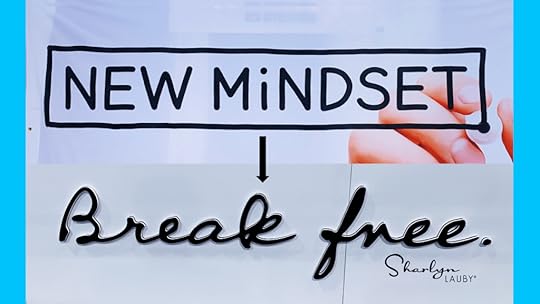
Estimated reading time: 2 minutes
I’ve been seeing a lot of talk lately about cover letters and whether they’re still relevant in today’s job search. Some of the talk has to do with the popularity of artificial intelligence (AI) and ChatGPT.
But the discussion about AI and job search is very confusing. For example, I read an article on Lifehacker about “Why You Shouldn’t Use AI for Your Cover Letters” and then an article on Resume Builder that says “3 in 4 Job Seekers Who Used ChatGPT to Write Their Resume Got an Interview”.
Back to cover letters. I’ve always thought of a cover letter has a way to introduce yourself. And I still do. But if everyone hates cover letters so much, then I have to believe the quality of them diminishes because candidates aren’t writing them for their intended purpose.
CNBC published an article last year saying 58% of workers feel cover letters are unnecessary. To offer some context, only 32% of people despise pineapple on pizza. And regardless of your thoughts about Hawaiian pizza, you have to admit it’s a pretty passionate topic. So when 58% of people are anti- cover letter, I think you have to pay attention.
I wanted to get your thoughts on this, so I’ve put together a quick poll. And because I could see opinions being different depending on whether you’re a recruiter or a candidate, I’ve constructed this one to address both.
If the poll above did not come through on an email, please click through to HR Bartender and answer there.
Thanks so much for taking the time to complete this totally unscientific one-question poll. I’m sure there are other nuances we can explore but this is a great place to start the conversation. And in case you were wondering, I already asked my fave AI platform what they thought of cover letters (but I wouldn’t want to influence your reply by sharing their response).
As always, I’ll publish the results in a couple of weeks. It will be very interesting to see where the similarities and differences are.
Image captured by Sharlyn Lauby at the SHRM Annual Conference in Las Vegas, NV
The post Are Cover Letters Still Relevant [POLL] appeared first on hr bartender.
June 13, 2023
Let Employees Learn by Breaking Things at Work

Estimated reading time: 3 minutes
My apologies. I know the title might be a bit deceiving. I don’t mean let employees “literally” break things.
Let me explain. I was recently facilitating a seminar on talent acquisition, and we got on the topic of artificial intelligence (AI) and ChatGPT. While several participants mentioned that they were being cautious and staying away from sites where AI is concerned – and I totally understand that – one person said that their company was encouraging them to “go break stuff”.
They went on to say that “breaking stuff” didn’t mean abandoning good business sense or putting the company’s data in jeopardy. They said that the company wanted them to explore and learn new things, so they weren’t afraid of new technologies. Breaking stuff was their way of saying go find ways to use it and start to get comfortable.
It reminded me of one of my early HR jobs. Our company had a human resources information system (HRIS) that was built by the internal technology team. So, when users (i.e., the HR department) wanted changes or updates, they contacted me. It was part of my job to pull these requests together and present them to the technology team.
Then the technology team would build the new feature and send it back to me for testing. I had a separate computer designed to do nothing but test new HRIS features. My job was to see if it worked the way users wanted but also to make sure there weren’t any glitches that could cause problems. For example, the system shouldn’t allow someone to make $1,000,000 per hour. Once the system was tested and working the way it should, then it could be rolled out to users.
There are lots of articles being published that AI represents the end of civilization as we know it. And on the other side, plenty of articles saying it’s the cure for everything. I don’t want to dismiss either of these views. My guess is that the real answer is somewhere in between. But I do know this, technology isn’t going away. We need to understand how it works. The way we discover its capabilities is by experimenting (aka “breaking stuff”).
Keep in mind this is also a great way for employees to learn. The process of testing and experimentation involves critical thinking, logic, analysis, process improvement, communication, and much more.
If you’re an organization wanting to stay competitive and believe technologies might help you do that, maybe creating a “lab” environment to test new things makes sense. And if you’re an employee looking for new ways to learn and build skills, maybe being a part of a team that’s testing new technology would be a good opportunity.
Organizations and individuals need to find ways to learn about new things. They need to be curious. There’s an old saying that the most dangerous six words in business are “We’ve always done it that way.” It’s true. If we want to continue delivering value, we need to be willing to “break things” every once in a while.
Image captured by Sharlyn Lauby while exploring the streets of Fort Lauderdale, FL
The post Let Employees Learn by Breaking Things at Work appeared first on hr bartender.
June 11, 2023
Teams Should Learn How to Manage Conflict
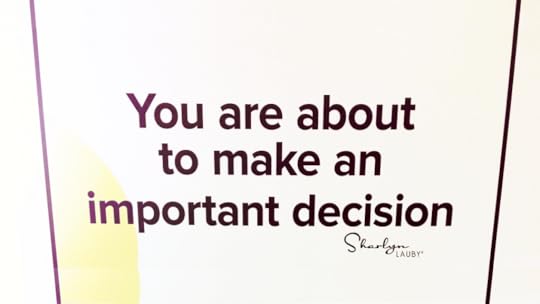
Estimated reading time: 4 minutes
During this year’s SHRM Talent Conference, I had the opportunity to hear Amy Gallo, author of the book “Getting Along: How to Work with Anyone (Even Difficult People)”. In her presentation, she mentioned the concept of artificial harmony, which I believe was first coined by Patrick Lencioni in “The 5 Dysfunctions of a Team”. Artificial harmony happens when a team or group agree on something even though they do not believe it’s the best decision. Basically, artificial harmony is when people fake being a productive team because they don’t want to disagree with each other and create conflict.
Artificial harmony reminds me of “The Abilene Paradox”, which is defined as when a group of people decide on a course of action that’s counter to the preferences of the majority of the group.
Whether you call it artificial harmony or the Abilene paradox, the result is the same – groups do things that they never wanted to do and end up with results they really didn’t want. So, what can we do to stop this from happening? It begins with healthy conflict management. Gallo points out in her session that healthy conflict results in:
Learning and growthA more inclusive work environmentImproved relationshipsJob satisfaction, and Better work outcomesA big component of achieving healthy conflict is understanding how to disagree with someone, which means having a high level of self-awareness. For example, when I worked in the hospitality industry, we would describe unhappy customers two ways: talkers and walkers.
Talkers are the people who are willing to share when they’re not happy. The advantage of talkers is that they give companies a second chance. If you know what’s wrong, you can fix it. The disadvantage is that talkers might not be afraid to express their dissatisfaction in a very direct way and someone on the receiving end of that conversation could find it uncomfortable.
Walkers are the people who when they’re not happy, they just leave. The advantage of walkers is that there are no unpleasant conversations to deal with. The disadvantage is that you don’t know there’s anything wrong. Because walkers simply leave, it’s possible you could have fixed the situation if you knew about it. But instead, the company lost a customer.
Ideally, companies want their customers to be talkers, which means they should conduct customer service training, so employees know how to deal with difficult conversations.
Now, apply walkers and talkers to the employee experience. People should ask themselves, “Am I a talker and willing to share with others when I feel things aren’t going well? Or am I more of a walker and just simply look for opportunities to work with a different group?” It’s possible that the answer might depend on the person or team you’re working with, whether you work onsite or remote, and/or the issue. It’s also possible that our life and work experiences might play a role. And finally, we might find that our culture, gender, or age are considerations as well.
A few months ago, I shared with you a problem-solving model called STP (Situation – Target – Proposal). You can use this model as a conflict management tool. Next time the team is having some challenges, think about the reason the conflict exists.
If it’s because the group cannot agree on the SITUATION (i.e., there’s differing views on what’s happening), then the answer is to do more research. The additional data and information could help the group reach consensus on the situation.
When the group can’t agree on the TARGET, or goal, then they should take time to negotiate and/or compromise. Spending time discussing options can help to create a goal that, while it might not be perfect, it was reached with maximum involvement.
Should the disagreement be focused on the PROPOSAL – which is the path or steps to accomplish the goal – then the solution is consensus building. Consensus building is different from compromise – the focus of consensus building is getting everyone to support the process. They don’t have to love it or even like it, but everyone needs to be able to support it.
Organizations are spending a lot of time right now saying that employees need to return to onsite work because of the benefits of working as a team. And I won’t deny it – there are advantages to group work. However, teams need to be able to successfully manage conflict. Organizations should think about how employees are developing those skills.
Image captured by Sharlyn Lauby while exploring the streets of New Orleans, LA
The post Teams Should Learn How to Manage Conflict appeared first on hr bartender.
June 8, 2023
Should HR Be Responsible for Facilitating Friendships

Estimated reading time: 3 minutes
There was an article on HR Brew recently titled “Most workers don’t have a best friend at work.” The article is a good read worth checking out. It’s been well documented that having friends at work is a component of employee engagement. According to Gallup, having friends at work can provide support and improve wellbeing. And on the business side, there’s a link between workers with friends and profitability, safety, and inventory control.
However, I’m having a bit of a challenge with the HR Brew article from the recommendation that HR needs to get involved.
I understand that for employees to make friends at work, the culture and work environment needs to have high levels of psychological safety. But HR doesn’t “own” psychological safety. Senior leadership, managers, and frankly everyone needs to be an active participant in creating a psychologically safe environment.
I’m also a bit unsure about telling employees that the company is trying to be a place where people are or can be friends. I remember reading a quote in The Wall Street Journal from an employee who said, “I don’t want to put in an eight, nine, 10 hour day and then go out and have a beer with a coworker – only to talk about work some more.” Honestly, there’s a lot of truth in that. It’s possible to be nice and friendly with your coworkers without becoming friends and hanging out together.
Friendships should not be a work requirement. Yes, organizations need to create safe and pleasant work environments. And if people want to be friends – great. But if someone doesn’t want a birthday cake in the breakroom or to go to happy hour after work, that should be fine too. Forcing “friendships” creates the possibility the workplace will become cliquish and that’s the exact opposite of what you’re trying to do.
Individuals need to learn how to manage relationships. If for some reason, a group of friends have a falling out … they need to figure out how to deal with it. I’m not saying don’t make friends at work, so you never have to deal with conflict. But department managers and HR should not have to mediate fights between friends. There are plenty of times when we do need to mediate conflict, but being friends with someone means owning the responsibility of being able to work through differences.
Stress the importance of positive working relationships. Where I do see HR and management playing a key role is in demonstrating the value of positive working relationships. That includes being able to disagree and still respect each other. It also includes forgiveness, as in one person having to apologize to another for something they said or did or didn’t do.
Maybe instead of saying that HR is responsible for facilitating friendships, it makes sense to say that HR and management are responsible for encouraging positive working relationships. And if friendships come from that … great. I think we know they will.
There will always be people who for whatever the reason do not want to cross over into the friendship category. That’s okay. Organizations need to be fine with it and let those employees know it’s fine. Again, not wanting to be besties with coworkers is not the same as being mean or grouchy toward them. And I haven’t mentioned it so far but let us not forget that everyone needs to get their work done – regardless of friendship status. If we’re going to be a culture that allows people to bring their authentic selves to work, that includes not forcing people to become friends.
Image captured by Sharlyn Lauby while exploring the streets of Boston, MA
The post Should HR Be Responsible for Facilitating Friendships appeared first on hr bartender.
June 6, 2023
Quitting: How to Create a Quitting Plan – HR Bartender
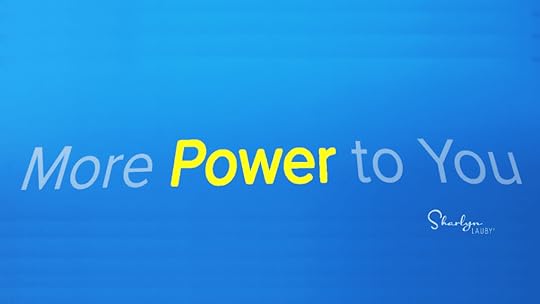
Estimated reading time: 3 minutes
I recently published an article titled “Quitting is not a sign of failure” and I totally believe it. There are times when we should quit things. However, something that I mentioned during the article was putting a plan in place to quit and I wanted to elaborate on that today.
When we’re deciding whether to quit something, we need to consider the best way and time to do it. For example, if we’re thinking about quitting our current job, we have to think about:
Can I just quit? Or should I look for a new job while I’m still working?Should I take some classes before I start looking?When should I reach out to friends and colleagues to let them know I’m looking?Is my resume up to date? Are my social media profiles current?There are more questions, but you get the point. If we’re considering quitting our current job, it just makes sense to put together a plan that gets us ready for that search. Especially if the plan might take a while to complete. In the case of a job search, we can work on our resume, social media profiles, and start reaching out to our network over time. That way, we’re not rushing to get things done. Job searches are hard enough without adding the extra pressure.
Using a job search as an example of a quitting plan is probably an obvious example. There will be times that we don’t have the luxury of putting together a plan. For instance, if we’re being placed in an illegal, unethical, or unsafe position, we might not be able to step back and take days, weeks, or months to plan. That being said, it’s possible that if we see signs that something is coming that we might be able to say to ourselves, “I don’t like what’s happening right now, I should be prepared if I’m asked to do something illegal, unethical, or unsafe.” And spend some time thinking about how you would like to respond if you’re ever placed in that position.
Another aspect to consider in your quitting plan is timing and cost. Having a plan can help us manage the cost of quitting, because sometimes there could be an expense. Personal story – several years ago, I decided I wanted to “quit” drinking coffee. No one was telling me to quit like for a health reason, I just wanted to switch to tea. Well, Mr. Bartender and I had lots of coffee around the house. So, we came up with a plan so I could switch to tea, and we wouldn’t throw a bunch of coffee away. It took some time to make the transition, but now he drinks coffee and I drink tea.
If we think about it, quitting is simply a form of change. And change is okay. We can use our skills in problem solving, decision making, change management, and goal setting to help us successfully quit and restart. Maybe make a SMART plan to help us get ready for a job search. The SMART plan would allow us to stay focused on our goal while outlining the steps we need to take as well as our timeline to success.
Or maybe our plan is to commit to buying less coffee and more tea. We don’t need to throw anything away, but we want to create change.
This doesn’t mean quitting isn’t hard. All change is hard. Even the changes we plan for. But creating a plan can help us to think about the steps we need to take and when we’d like to take them. Sometimes having that kind of control can make quitting and changing a lot easier.
Image captured by Sharlyn Lauby while exploring the streets of Scottsdale, AZ
The post Quitting: How to Create a Quitting Plan – HR Bartender appeared first on hr bartender.
June 4, 2023
Organizations: Please Stop Ranking Candidates and Employees

Estimated reading time: 3 minutes
I recently saw an article on Fast Company talking about the concept of ranking, as in ranking employees. This is something that was made popular decades ago by Jack Welch, former CEO of GE. His thought was to rank everyone and then terminate the bottom 10%. Back then, several companies embrace the idea of ranking.
Thankfully over time, the concept of ranking fell out of favor. Which is why I can’t tell if the Fast Company article is intended to support ranking or just call attention to the fact that companies are doing it again. Either way, I wanted to talk today about why ranking isn’t a great idea.
Here are a couple of examples to illustrate. Hypothetical #1.
Let’s say we all work in the sales department. And the organization decides to rank all the sales managers. That means someone must be on the bottom of the list. Let’s say it’s me. So Sharlyn is the worst sales manager. According to Jack Welch, I should be fired.
But here’s the deal. I sold $10M last year. I had a $1M goal. So, I sold 10x my goal and I’m the worst and I’m gonna get fired. The problem here isn’t me or my sales. It’s the company’s goal setting process.
The same philosophy applies to candidates and the recruitment process. Hypothetical #2.
We’re hiring a new sales manager. All the interviews are done, and the recruiting team is getting together to discuss the final candidates. They decide to rank all the candidates. Again, that means that someone will end up on the bottom of the list.
Remember, the first goal of a job search is to get multiple job offers. Candidates want multiple offers to consider . Which means that companies should have the same goal – multiple qualified candidates. The challenge with ranking is that the last candidate on the list could be a highly qualified candidate. But they are last on the list. And how many managers are willing to say that they want to hire the last person on the list.
Ultimately, organizations should not be ranking employees. They should be comparing employee performance to the company standard (we discussed performance standards at length in our article on quiet quitting). If an employee’s performance doesn’t meet the standard, then that should be addressed. Keep in mind, my examples above only talked about the bottom of the ranking. What if the person at the top of the list doesn’t meet the company standard (i.e., the best salesperson doesn’t make goal)?
The same applies with candidates. In interviews, we should not be saying “Oh, this person is better / worse than the last person I spoke with.” Instead, we should be saying, “Wow! I have two great candidates. This is going to be a tough decision.” Or maybe we’re faced with “Y’know, neither candidate has the qualifications. I’m going to follow-up with HR to see what next steps are.”
Ranking candidates and employees is a form of bias called contrast bias. It’s when we’re comparing people to each other versus what we should be comparing them to – which is the company standard. There’s a reason that ranking fell out of favor decades ago. It doesn’t help organizations attract, engage, and retain the best talent. In fact, organizations could just be making talent decisions using the wrong information.
Image captured by Sharlyn Lauby while exploring the streets of San Diego, CA
The post Organizations: Please Stop Ranking Candidates and Employees appeared first on hr bartender.
Sharlyn J. Lauby's Blog
- Sharlyn J. Lauby's profile
- 10 followers



